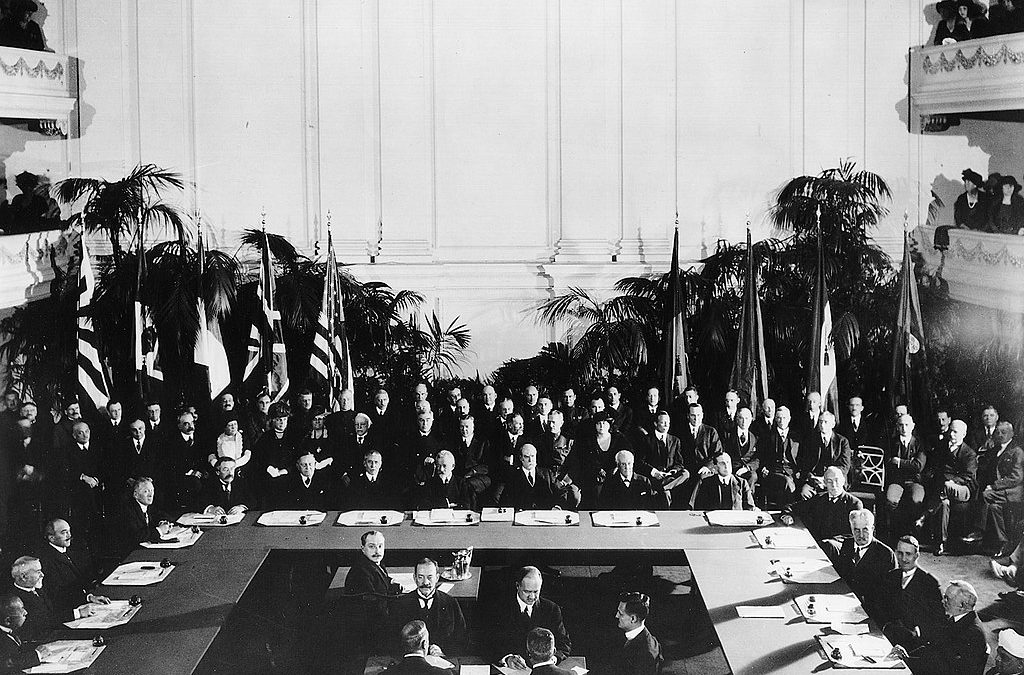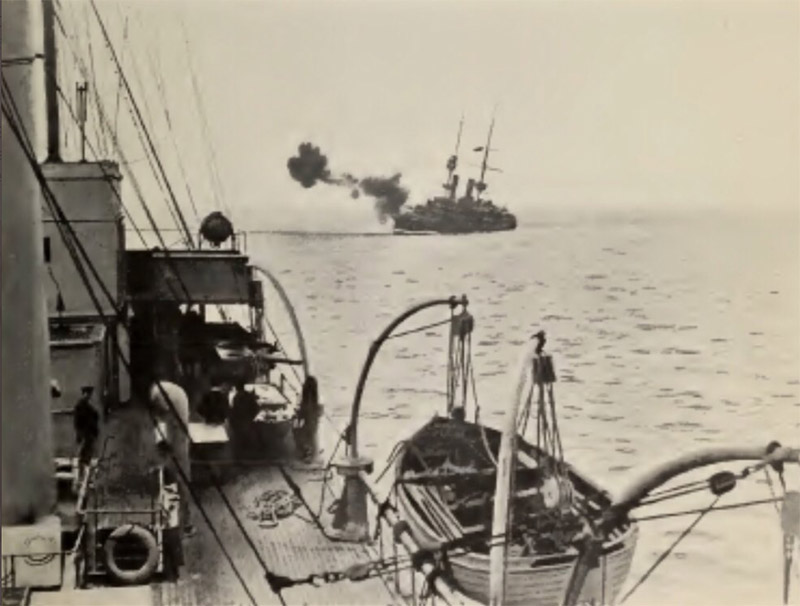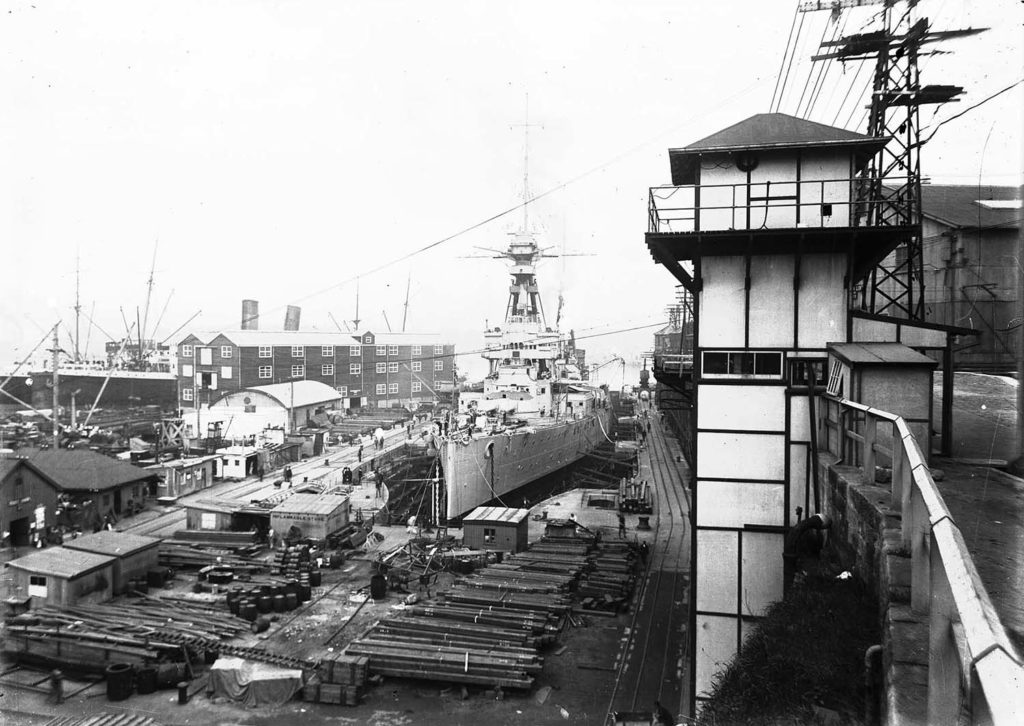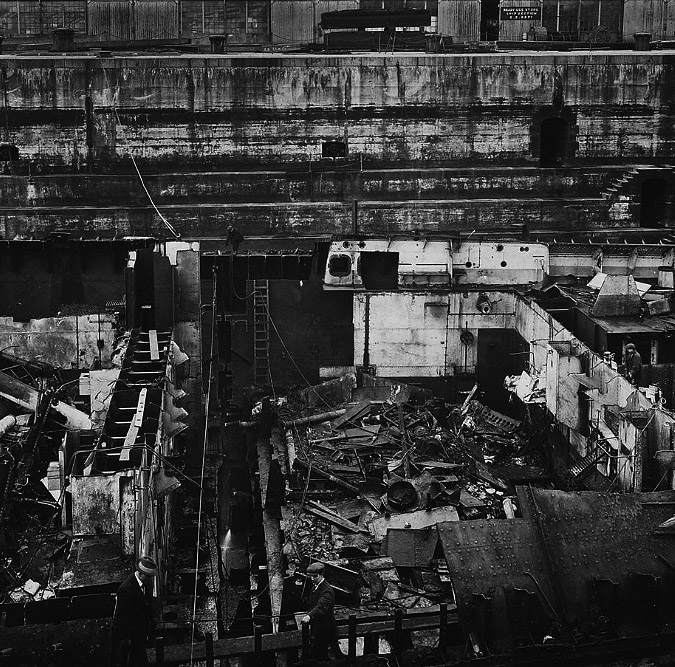The naval treaty of 6 February 1922 negotiated in Washington – technically the ‘Five Power Treaty’, but afterwards simply called the ‘Washington Treaty’ – included lists of the ships that signatories were required to dispose of. The longest was British. A significant proportion of the fleet built up with such controversy and expense before the First World War was tipped to become scrap metal.
Superficially, all these ships were disposed of because of the Five Power Treaty. But, inevitably, things were more complex. Legally the Treaty indeed required their destruction, but in many cases these ships were already on the chopping block, because they had been reduced to reserve status in 1919-20.
Reserve status as prelude to scrapping was a well-established process for the Royal Navy. Older ships were typically put in reserve when their useful life was judged over, left intact in part because they might be needed in a wartime emergency, but largely because a pool of such ships was useful to have. Sometimes one would be pulled out for use as a tender, accommodation ship, for engineering testing or some similar function. Sometimes they would be renamed along the way. As one example, HMS Spartiate, a Diadem-class cruiser first commissioned in 1903, became HMS Fisgard in 1915 when reduced to a depot ship. More usually, reserve vessels swung at anchor until eventually sold for scrap. That process often took years, in part because the Admiralty was reluctant to completely dispose of ships; but also because bureaucracy was slow.
When the First World War broke out, Britain’s reserve fleet included numerous ships dating back into the 1890s. All were obsolete. The fate of two of the oldest battleships highlights some of the ways the reserve capital ships were then employed. One, the 1890s-era turret ship HMS Hood, had been put on the sale list in 1914, but she was still around in November, when she was scuttled as a blockship. Check out the story – here. Another, the early pre-dreadnought HMS Revenge, was brought back into service for shore bombardment until purpose-built monitors could be deployed, and renamed Redoubtable to release the name for a new super-dreadnought.
After the Armistice of November 1918, most of Britain’s older dreadnoughts and battlecruisers were quickly put into reserve, apart from a handful set aside for special duties. They were obsolete by this time and, amidst a mood of demobilisation and sharp budgetary constraint there was little real chance of their returning to full service. That issue gained teeth mid-1919 when formal peace was signed with Germany.
One exception was HMS New Zealand, which was picked as the transport of Admiral Sir John Jellicoe on his year-long mission to advise Britain’s four main Dominons on naval policy.[1] But on her return to Portsmouth in February 1920 – where Jellicoe hauled down his flag as a seagoing officer for the last time – she was quickly taken out of service. On 6 February she was tugged to the No. 6 buoy on the Hamoaze and most of her crew sent on six weeks leave. A skeleton crew of 250 under Lieutenant David Boyle remained behind. She was then decommissioned on 15 March 1920.
In many respects we can take this ship as a case-study in what followed. By this time the British government had imposed drastic naval spending cuts and instituted the ‘ten year rule’, where the armed services were required to plan on no war for a decade.[2] HMS New Zealand was recommissioned as a tender for HMS Hercules on 8 June 1920, but the Admiralty considered her career over. Winston Churchill made it explicit in February 1921 when, as Secretary of State for the Colonies, he approached the New Zealand government over disposal of gunnery prize funds donated to the ship by the people of Timaru and Christchurch, on the basis that the battlecruiser ‘most probably will not again be permanently in commission’.[3]
This was well before the Washington disarmament conference had even been proposed – President Warren Harding did not ask the State Department to approach Britain and other nations until July that year.[4] To this extent, then, the addition of HMS New Zealand to the Treaty scrapping list was a formality. And the same was true for many of the rest of the capital ships on the list. Like all reserve ships they had a ‘just in case’ value, but – as Churchill’s request to the New Zealand government underscored – the government of David Lloyd-George had no real intention of funding any long-term return to service, and these ships were obsolete in any case.[5] All the diplomats involved in the conference knew it when the treaty was negotiated. But from the diplomatic point of view they still had to be included.
Given the realities of Britain’s financial position and the political attitudes of the post-war period it’s likely that had the Treaty not been signed, HMS New Zealand, along with the other 12-inch gunned ships, would have survived for some years as reserve vessels. We could envisage scenarios in which one or another was temporarily reactivated as a tender or accommodation ship. But the end would have come sooner or later. Aside from Britain’s long tradition relative to reserve ships, the inter-war years were economically dire for Britain, and budgetary limits and the Ten Year Rule were powerful forces.
One irony was that the ‘Washington Treaty’ specified destruction at a rate faster than some of the listed ships could be dismantled. HMS New Zealand was sold to a company floated by A. Wallace Cowan specifically to scrap her, Agincourt and Princess Royal. But it took most of 1922 to organise the transfer: New Zealand did not legally change hands until 19 December 1922. Physically cutting the ships up in ways that maximised return on the scrap was another process that took time – and Cowan’s company, Rosyth Shipbreaking, ran short. In the end they literally cut Agincourt in half as an expedient, symbolically marking her ‘destruction’ for legal purposes.[6]
The last pieces of HMS New Zealand were cut up in September 1924, less than 15 years after the ship had been laid down. All that remained was a handful of memorabilia, cases of gear despatched to New Zealand – and the floor of Cowan’s house, made with teak taken from New Zealand’s decking.
My book on HMS New Zealand is published by Seaforth and by the USNI Press. Check it out.
Copyright © Matthew Wright 2022
[1] Matthew Wright, The Battlecruiser New Zealand: A Gift to Empire, Seaforth, Barnsley 2021, pp. 188-189.
[2] This rule was institued in August 1919 and renewed annually until 1928, when Winston Churchill, as Chancellor of the Exchequer, managed to make it permanent until otherwise directed.
[3] Archives New Zealand R21463719 AAYT 8490 N1 18 /1/34 N1, ‘Accounts – Naval Benevolent Fund, New Zealand – HMS New Zealand prizes fund – General – Correspondence’, Winston Churchill to Jellicoe, 7 February 1921.
[4] ‘Conference on the Limitation of Armament’, The American Journal of International Law, Vol. 16, No. 2, April 1922, p. 159.
[5] Aside from any other consideration, at Jutland, HMS New Zealand had difficulty matching the ranges at which the 13.5-inch battlecruisers were engaging, see Wright p.168.
[6] Archives New Zealand R1836075 ABFK W3947 3/ The Rosyth Shipbreaking Co Ltd, album, A. Wallace Cowan, ‘Lecture to the Edinburgh University Commerce Association’, 10 February 1936.






Recent Comments